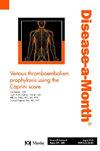Schizophrenia and psychosis in children and adolescents: An inspiring journey of scientific progress and the rich influences of history and religion
IF 4.3
3区 医学
Q1 MEDICINE, GENERAL & INTERNAL
引用次数: 0
Abstract
The human brain begins in utero through neurulation, during which the neural plate develops into the neural tube. Through a complex journey of remarkable neurological intricacy, the central nervous system (CNS) forms with billions of neurons and trillions of connections. This extraordinary process is filled with dangers, including genetic abnormalities (from both maternal and paternal sources), maternal injuries such as infections, substance use, immunological conditions, and other factors. It is somewhere during this development of cerebral functions that a vulnerability to schizophrenia arises. The evolutionary origins still remain elusive to this day. Clinically recognized about 130 years ago, the history of schizophrenia spans thousands of years, with conceptualization evolving from linking the condition to supernatural invasions to understanding it as a complex brain disorder, as defined by the American Psychiatric Association’s 2013 DSM-5 criteria.
The typical age range for presentation and diagnosis is usually between 15 and 30 years of age; presentations in older and younger age groups are also identified. Diagnostic definitions can vary; in this discussion, presentation of schizophrenia prior to 18 years of age is called pediatric schizophrenia (or EOS: early-onset schizophrenia) and COS: childhood-onset schizophrenia (very early-onset schizophrenia or VEOS) with onset prior to 13 years of age.
Concepts of pediatric schizophrenia are considered that include historical perspectives, epidemiology, diagnosis, etiology, co-morbid conditions, differential diagnoses, evaluation principles, and concepts of management (i.e., psychopharmacology, psychotherapy, ECT and psychosocial support).
Clinicians evaluating a child or adolescent with features suggestive of psychosis must keep in mind the numerous medical and psychological conditions that can serve as differential diagnoses and co-morbid conditions. These disorders are discussed in this treatise. The younger the child, the more likely there is another disorder simulating schizophrenia, such as epilepsy, infection, inborn errors of metabolism, porphyria, immunologic conditions, genetic (epigenetic) aberrations, and numerous others. Before treating this young person for schizophrenia, one must have the back-up or support of a comprehensive testing protocol (i.e., laboratory studies, neuroimaging results, genetic analyses, etc.). Always screen for suicidality as suicide is a persistent peril for individuals with psychosis.
As one provides psychopharmacologic products (i.e., mostly dopamine receptor antagonists) for this psychiatric problem, the medical and psychiatric health of the child or adolescent must be known in detail. The potential side effects (i.e., neurologic, extrapyramidal, metabolic, cardiac, others) of these current agents are disturbing to these young individuals and are reviewed along with management principles. Clozapine remains the gold standard for drug-resistant schizophrenia and violence-linked psychosis, despite its potentially menacing side effect profile (i.e., agranulocytosis, seizures, sialorrhea, others). Comprehensive care for co-morbid conditions is critical in the overall picture of optimal management.
Principles of psychosocial support for the primary care clinician are provided to help the young person who has schizophrenia and the family with the goal of transforming what may be labeled as a sinister situation into a chronic, yet manageable, as well as non-stigmatizing disorder.
儿童和青少年的精神分裂症和精神病:科学进步的鼓舞人心的旅程和历史和宗教的丰富影响。
人类的大脑在子宫内通过神经发育开始发育,在此期间神经板发育成神经管。中枢神经系统(central nervous system, CNS)是由数十亿个神经元和数万亿个连接组成的。这一非同寻常的过程充满了危险,包括遗传异常(来自母亲和父亲)、母亲受伤(如感染)、药物使用、免疫状况和其他因素。正是在大脑功能发育的某个阶段,出现了精神分裂症的易感性。进化的起源至今仍难以捉摸。精神分裂症的临床认识大约在130年前,它的历史跨越了数千年,从将这种疾病与超自然入侵联系起来,到将其理解为一种复杂的大脑疾病,这是美国精神病学协会2013年DSM-5标准所定义的。表现和诊断的典型年龄范围通常在15至30岁之间;老年人和年轻人的表现也被确定。诊断定义可能有所不同;在本讨论中,18岁之前出现的精神分裂症被称为儿童精神分裂症(或EOS:早发性精神分裂症),而13岁之前出现的儿童精神分裂症(极早发性精神分裂症或VEOS)被称为COS。儿童精神分裂症的概念包括历史观点、流行病学、诊断、病因、合并症、鉴别诊断、评估原则和管理概念(即精神药理学、心理治疗、电痉挛疗法和社会心理支持)。临床医生评估具有精神病特征的儿童或青少年时,必须牢记可作为鉴别诊断和共病条件的众多医学和心理条件。在这篇论文中讨论了这些疾病。孩子越小,越有可能出现类似精神分裂症的其他疾病,如癫痫、感染、先天性代谢错误、卟啉症、免疫状况、遗传(表观遗传)异常,以及许多其他疾病。在对这名年轻人进行精神分裂症治疗之前,必须有一个全面的测试方案(即实验室研究、神经成像结果、遗传分析等)作为后盾或支持。始终筛查自杀倾向,因为自杀对精神病患者来说是一种持续存在的危险。当一个人为这种精神问题提供精神药理学产品(即主要是多巴胺受体拮抗剂)时,必须详细了解儿童或青少年的医学和精神健康状况。目前这些药物的潜在副作用(即神经系统、锥体外系、代谢、心脏等)对这些年轻人造成了困扰,并与管理原则一起进行了审查。氯氮平仍然是治疗耐药精神分裂症和暴力相关精神病的金标准,尽管它有潜在的危险副作用(即粒细胞缺乏症、癫痫、唾液漏等)。对合并症的综合护理对最佳管理的总体情况至关重要。为初级保健临床医生提供心理社会支持原则,以帮助患有精神分裂症的年轻人及其家庭,目的是将可能被标记为危险的情况转变为慢性的,但可控制的,以及不污名化的疾病。
本文章由计算机程序翻译,如有差异,请以英文原文为准。
求助全文
约1分钟内获得全文
求助全文
来源期刊

Dm Disease-A-Month
医学-医学:内科
CiteScore
5.70
自引率
2.50%
发文量
140
审稿时长
>12 weeks
期刊介绍:
Designed for primary care physicians, each issue of Disease-a-Month presents an in-depth review of a single topic. In this way, the publication can cover all aspects of the topic - pathophysiology, clinical features of the disease or condition, diagnostic techniques, therapeutic approaches, and prognosis.
 求助内容:
求助内容: 应助结果提醒方式:
应助结果提醒方式:


